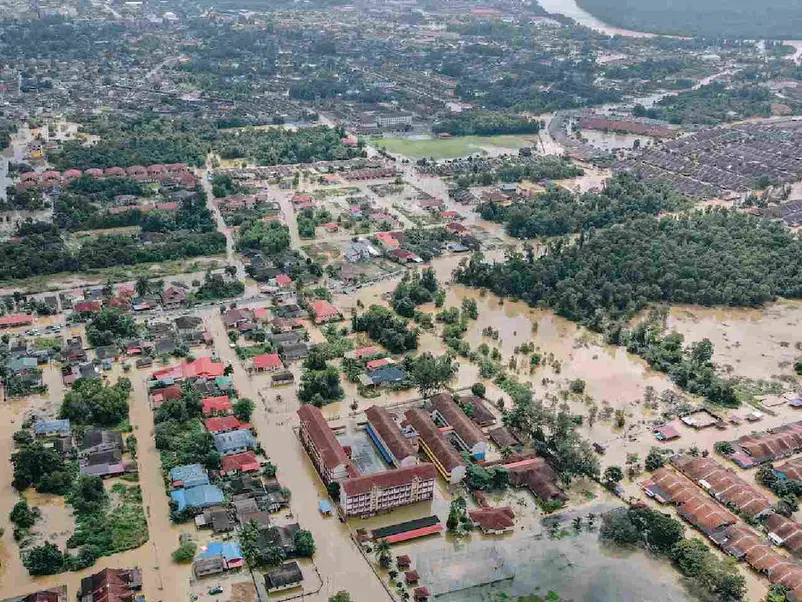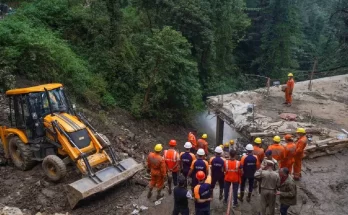The Global Report on Internal Displacement 2023 laments lack of systematic data collection in South Asian countries.

Image used for representational purpose only. (Photo Credit: Pexels)
Of the 32.6 million internally displaced people around the world due to natural disasters in 2022, over 2.5 million are in India, the Global Report on Internal Displacement (GRID) 2023 said.
About 98% of disaster displacements were triggered by weather-related hazards such as floods, storms, and droughts, the report stated. Six out of 10 disaster displacements were triggered by floods, surpassing storms for the first time since 2016.
The total number of people living in internal displacement was 71.1 million at the end of 2022, a 20% increase in a year and the highest number ever recorded. The top five countries in the disaster displacement category are Pakistan (8.16 million), the Philippines (5.44 million), China (3.66 million), India (2.5 million), and Nigeria (2.43 million).
According to the GRID 2023, “The 32.6 million people triggered due to disasters are almost half (53%) of the total internal displacement, the rest being those displaced due to conflict. Disaster displacements in 2022 were 41% higher than the annual average of the past 10 years.”
The significance of these figures becomes stark in light of the fact that displacement contributes to the massive economic cost of natural disasters. The latest data from the World Meteorological Organization (WMO) released on Monday noted that extreme weather, climate, and water-related events caused 11,778 reported disasters between 1970 and 2021, with over two million deaths and economic losses worth $4.3 trillion. “Over 90% of reported deaths worldwide occurred in developing countries,” the WMO added.
GRID had two broad categories for disaster displacement: weather-related and geophysical hazards-related. The number of people internally displaced due to floods was 19.21 million, followed by storms (9.98 million, with 7.59 million of them due to cyclones and 2.38 million due to other storms), droughts (2.21 million), wildfires (3,66,000), landslides (53,000), and extreme temperatures (12,000).
The 716,000 internally displaced people due to geophysical events included 699,000 due to earthquakes, 13,000 due to volcanic eruptions, and 3,700 due to landslides.
Floods triggered 90% of displacements in South Asia
Out of the total 12.6 million people internally displaced in South Asia, disaster displacement numbers were as high as 12.5 million in 2022. It is double the annual average of 6.3 million over the past decade.
The GRID data showed that 90% of displacements in the region were triggered by floods, with 25% of global disaster displacements triggered by monsoon floods in Pakistan last year. “The increase was mostly the result of the severe and widespread flooding that occurred in Pakistan during the monsoon season. It had engulfed almost a 10th of Pakistan’s area.”
Interestingly, the WMO’s State of the Global Climate Report 2022, released last month, recorded a total of 477 extreme weather events across the globe. Heatwave (117 incidents) was the top event followed by floods (63), rain/wet spell (61), drought/dry spell (58), and cold wave (30).
Explaining why floods cause more displacement even though heatwaves have a larger incidence, Ranjan Kelkar, former director general of India Meteorological Department (IMD), said, “If you place the population density map over the water availability map, they coincide. Population density depends on the availability of water. Temperature in general is not a factor for leaving one’s place. Extreme temperature for other areas and humidity for coastal areas aren’t really the reasons for displacement. People get acclimatised to given topography. And this has been happening over the centuries.”
“Humans are resilient and adjustable, so temperature and humidity are not the overriding factors,” Kelkar added.
An analysis of IMD data by Centre for Science and Environment (CSE) for 2022, too, had pointed out that in India, heavy rains, floods, and landslides were the most recurring extreme weather event type (reported on 214 days in the year), followed by lightning and storms (185 days), heatwaves (66 days), cold wave/cold days (46 days), cloudbursts (11 days), snowfall (four days) and cyclones (three days).
“In 2022, extreme weather events cumulatively claimed 3,026 human lives, affected at least 1.96 million hectares crop area, destroyed 423,249 houses, and killed over 69,899 animals,” the CSE analysis stated.
A major source for such data in India is the annual report of the National Crime Records Bureau (NCRB). As per the latest available report for 2020-21, a total of 7,126 deaths in the country were reported due to causes attributable to forces of nature.
Of these accidental deaths, 40.4% were due to lightning, 9.2% due to flood, and 8.7% due to cold exposure.
Data challenges in India, South Asia
However, data availability in South Asia—reliable data and uniformity in compilation—is a major issue. The NCRB data is not recorded as how the IMD does or the Central Water Commission (CWC) does for hydrology-related disasters.
The Global Report on Internal Displacement 2023, too, highlighted this lacuna. “Despite being highly prone to disasters, most countries in South Asia still lack comprehensive data on the displacement these trigger. Disaster reports in Bangladesh, India, Nepal, and Pakistan tend to be produced only for medium- to large-scale events. This means that small-scale disasters which could together lead to significantly higher displacement figures are not included,” it pointed out.
In fact, most countries even lack data related to natural disasters, natural hazards, and the number of people affected due to each of these.
Col Sanjay Srivastava, Chairman, Climate Resilient Observing-Systems Promotion Council (CROPC), stated, “The picture is indeed very foggy. The IMD only collects that data which is sent by its centres from across the country. The respective state disaster management authorities compile data for only those cases where those bodies have paid compensation of any kind. The National Institute of Disaster Management (NIDM) or National Disaster Management Authority (NDMA) under the Ministry of Home Affairs (MHA) do not have a separate disaster-wise database.”
Pointing out “ample scope for improvement”, Srivastava added, “There’s a need for a straightforward database for each weather event and also the number of people affected in each of those events.”
In the absence of credible data, government policy and planning can suffer. “The lack of comprehensive coverage and time-series data also means that estimates have to be produced by triangulating and aggregating government and media reports, which have varying levels of reliability. Nor is displacement associated with slow-onset hazards such as drought, river bank and coastal erosion, and glacier melt often reported,” the report pointed out.
What India faced all these years was due to a systemic issue. “We never had dedicated funds for supporting recovery and reconstruction. So, assessment of damage and loss to life and property could not happen,” a government official said on the condition of anonymity.
“Some attendant issues, such as coastal and river erosion, become more accelerated due to climate change. Therefore, there is a need for systematic collection of data,” the official added.
Only in the case of large-scale disasters, such as super cyclones, did India approach World Bank for funds for carrying out such assessments.
Fortunately, things are changing slowly and steadily. Krishna S Vatsa, a member of the NDMA, said, “Following the recommendations of the 15th Finance Commission, which has allocated resources for recovery and reconstruction, there would be a push towards assessing damage and loss for all the disasters. Such assessments would, over a period of time, build a database of national level damage and loss as well as displacements.”
(This story first appeared on news9live.com on Apr 28, 2023 and can be read here.)



